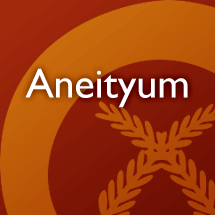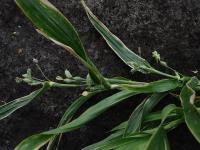Your search for * in family Poaceae has returned 18 entries
intesyaniau
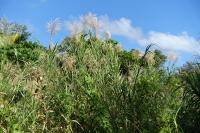
n. grass to 3 m, flowers brown. Growing in degraded secondary forest along trail. (collection: Michael J. Balick #4969)
Example: The stem of this plant is used to make walls of houses. Collect the stem and remove the leaves, and then take one of the bush vines (any of them) and tie the stems into bundles for making house walls or fences for chicken pens. Children make a whistle from a hollow piece of stem from this plant.
bookmarkmaprum
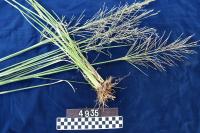
maprum
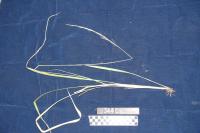
nadeij
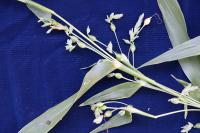
napjau
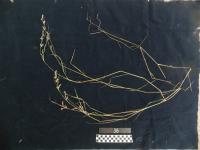
n. grass. Found along intra village path. (collection: Ashley A McGuigan #35)
Example: 1. Bath for babies to make them healthy and walk faster, mix with plants WAKAS (AAB 34), NITIDEI (GMP 3658 or 4043), and a grass NATUTAHUT (MJB 4945). Put all in a kettle filled of water and wash them with it – use 1 handful of each leaf.
bookmarknasjiramnem
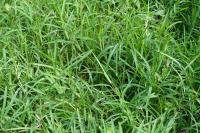
n. grass to 20-30 cm tall, florets brown. Growing along trail. (collection: Michael J. Balick #4970)
Example: This plant is used to make a medicine to stop bleeding, as a styptic. Squeeze a handful of leaves together and apply the leaves as a poultice to the wound or drip the juice on the wound when it does not seem wise to put pressure on the bleeding. This will stop the blood from flowing from the wound and is only to be used on a small wound.
bookmarknatiñpece
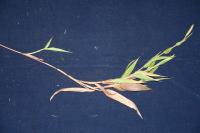
natutahut
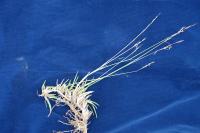
n. grass to 10 cm, seeds brown. (collection: Michael J. Balick #4945)
Example: To make a baby strong, burn the leaves and rhizome, take the ashes and rub on the baby’s arms, knees, legs. Makes them strong, healthy and able to walk. Use after the child is given a bath. 1-4 years old, and it will help. Can use every day after bathing.
bookmarknau
n a plant, with upright clumping. (collection: Ashley A McGuigan #25)
Example: 1. To cure the sea snake (nispev) curse that causes missed periods. First the husband must combine 4 young leaves of incispev and 4young leaves of nafanu and mash and squueze the juice into a small bamboo (1-1.5 inch diameter) The nafanu is important because it is a plant that connects to the sea. Use wildcane leaves cover the bamboo closed. Go to the sick person and unwrap the snake from her. Start from the top and let the woman drink a small part of the potion then wash her with the mixture, making sure to wash head, elbows, knees, feet, and belly. Then take a leaf of naha and break it over
bookmarknau hos
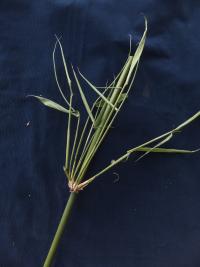
n. a kind of bamboo (collection: Ashley A McGuigan #25)
Example: 1. To cure the sea snake (nispev) curse that causes missed periods. First the husband must combine 4 young leaves of incispev and 4 young leaves of nafanu and mash and squeeze the juice into a small bamboo (1-1.5 inch diameter) The nafanu is important because it is a plant that connects to the sea. Use wildcane leaves cover the bamboo closed. Go to the sick person and unwrap the snake from her. Start from the top and let the woman drink a small part of the potion then wash her with the mixture, making sure to wash head, elbows, knees, feet, and belly. Then take a leaf of naha and break it over the woman’s belly button to break the snake off. Smash the bamboo vessel to pieces. Leave the woman there until the wash dries on her. This takes one whole day and the ceremony in the evening so she can sleep and she must not eat. This ritual is performed by men. 2. To make house walls cut to length desired break stems into straps and weave ??. 3. Use stem to cook foods. 4. Container for carrying water. 5. Take tips and tie together and make a torch to go fishing on the reef, walk with the torch – this is a current practice in the East side. 6. Can cut a piece about 1’ long and sharpen edge and use to skin a green banana. 7. Traditional medicine – can use a small segment as a sort of container to carry the traditional medicine to the patient – for example when prepare a sea snake for remedy, or any medicine – to carry it. 8. Used as a container to preserve seeds such as corn, cucumber, beans and is covered with coconut fiber and put near (above?) the fire where it is dry, and the smoke from the fire will keep insects from attacking the seeds.
bookmarknau-hos
n. bamboo to 5 m, sterile. (collection: Michael J. Balick #4940)
Example: Used to build walls of local houses. The outer skin is stripped off, stems cut in half then smashed flat, the inside is stripped clean and woven into walls. The cut pieces of entire stems can be filled with food and used for cooking that food. Cover both ends with leaves and cook. If a person has skin that becomes infected, use sharpened stem as a local knife to remove the infected area of skin. Use as a local water pipe to move water from one place to another (nobol). Either split the stem in half or punch the nodes out throughout the entire tube and use as a pipe.
bookmarknautahos
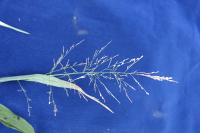
n. herb, 1. 5 m tall (collection: Gregory M. Plunkett #3280)
Example: A "message plant". In ancient times, this plant was used for communicating. If you go to a person who composes songs and give this to them, they will know to compose a song for you. Name means "flowers on the ground".
bookmarkneyo
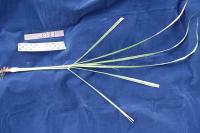
n. grass to 70 cm tall, sterile. Cultivated at the side of a field. (collection: Michael J. Balick #4958)
Example: The leaves and stems are boiled in water to make tea. The base of the leaves (the whitish part) is used to cook foods that have a strong odor, such as goat or shark. The base is sliced and put in the soup and this helps to keep the smell of the goat or shark from infusing through the rest of the food and making it less palatable. In some areas of Aneityum, such as in cassava fields, there is a fungus that kills the crops. This species is interplanted with the crops to kill that fungus and protect the crop plants.
bookmarkniri
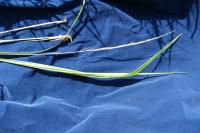
n. grass to 1 m tall, florets brown (collection: Michael J. Balick #4973)
Example: This grass is used to thatch the roof of a traditional house. Tie bunches of the grass on a stick ca. 2 m long, using string from Pandanus or other vines. Lay these on the roof and tie these sticks with grass on crossbars to secure them. The flowers of this grass are harvested and put in bags to make pillows. The flowers are soft and easy to gather and make a nice pillow.
bookmarkniyeg
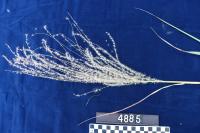
n. grass to 1. 5-2. 0 m tall, inflorescence white. Red clay soil (collection: Michael J. Balick #4885)
Example: Cut this grass in the morning, let dry for 2 days, and then use to weave the roof of a house. This is thicker and heavier than a coconut leaf. Also, use for cyclone house. (see photos of house) When indicating something is Tabu, tie the leaf and put it in an object like ripe bananas and people know it is Tabu and will not take it away.
bookmarkniyeg
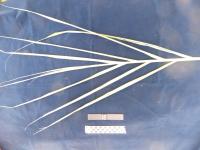
n. grass. Found in disturbed area behind the village. (collection: Ashley A McGuigan #12)
Example: 1. To cure the sea snake (nispev) curse that causes missed periods. First the husband must combine 4 young leaves of incispev and 4 young leaves of nafanu and mash and squeeze the juice into a small bamboo (1-1.5 inch diameter) The nafanu is important because it is a plant that connects to the sea. Use wildcane leaves cover the bamboo closed. Go to the sick person and unwrap the snake from her. Start from the top and let the woman drink a small part of the potion then wash her with the mixture, making sure to wash head, elbows, knees, feet, and belly. Then take a leaf of naha and break it over the woman’s belly button to break the snake off. Smash the bamboo vessel to pieces. Leave the woman there until the wash dries on her. This takes one whole day and the ceremony in the evening so she can sleep and she must not eat. This ritual is performed by men. 2. Main plant to thatch roof of local houses. 3. Collect the dry stems, tie together, use as a torch at night for walking or walking along the reef when fishing. 4. Take 1 cane and tie the leaves together and tie on a tree to indicate tabu – e.g. a citrus tree that will be ripe soon to tell people not to pick it. 5. To catch crabs just before sunset, burn the torch and shake the ashes on the rocks; come back an hour or so later and the crabs are attracted by the ashes and you can collect them. 6. Can also use to weave walls of house. 7. Women clean the leaves of the stem and use the hard part of the stem to strip pandanus leaf before weaving a basket. 8. Cut wild cane in half and sharpen the end, use this to cut the dried pandanus leaves into small strips. 9. Tie leaves into a knot and stick the knot on the kava stem; t is means that this kava goes “express” so the carrier goes to one border of a village and passes it to another person who knows it cannot stop in this village but goes to the next border and is passed on 10. This plant is a “message plant” to say “don’t stop,” referring to something being delivered.
bookmarkniyeg
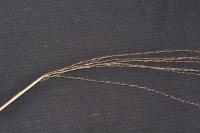
n. grass, 2. 5 m tall (collection: Gregory M. Plunkett #4071)
Example: 1. Dried leaves are used to make the thatch roofs of traditional houses. The same leaves are woven to make the walls of traditional houses. 2. When a large torch is required, many dried stems are bundled to form a flambeau. 3. The leaves of this plant are used to demarcate tabu areas. Further information about the practice withheld.
bookmark